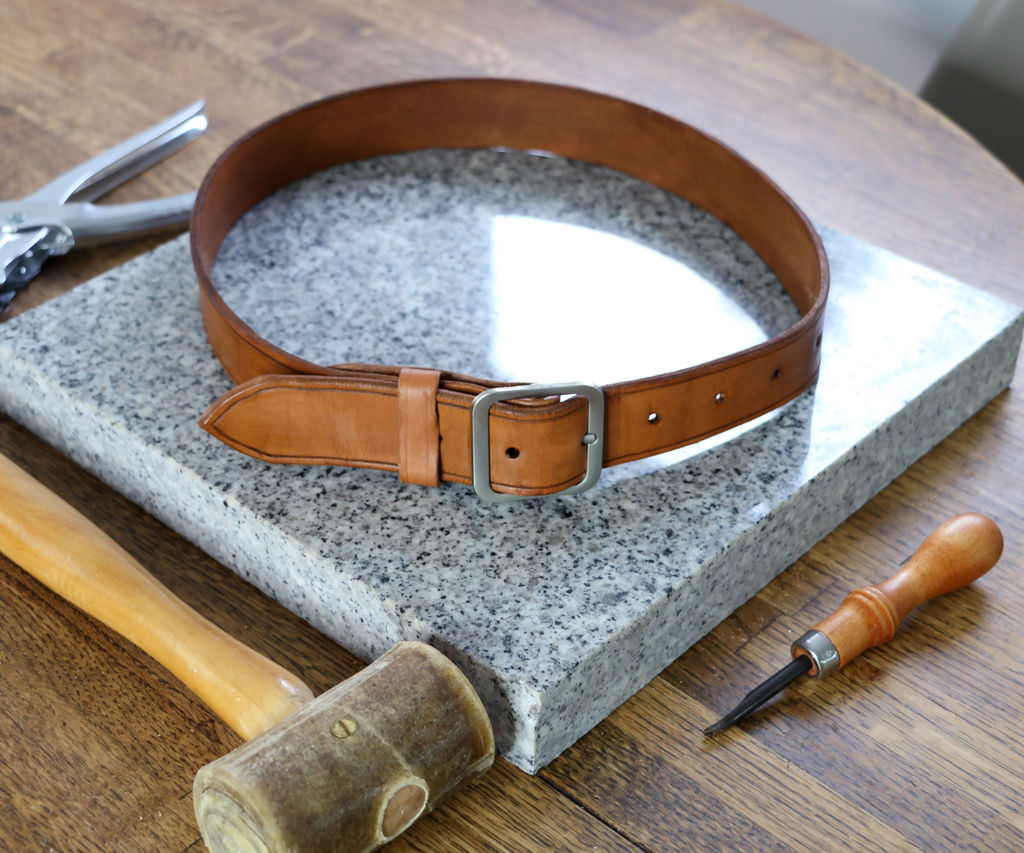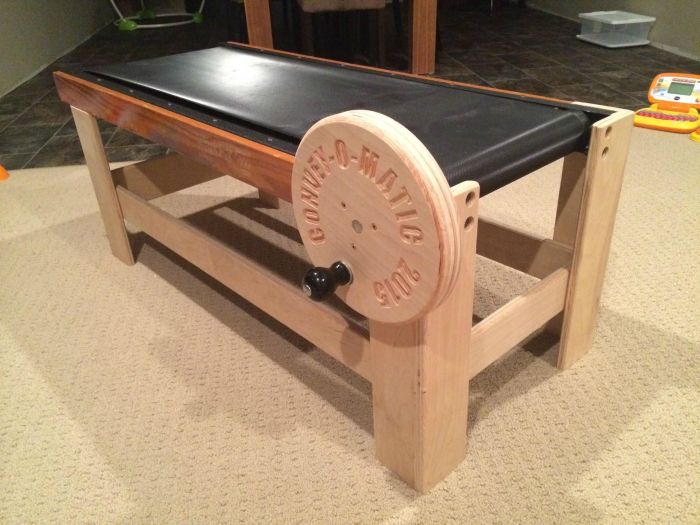DIY belts offer a unique opportunity to express your personal style and create a piece of wearable art. From classic to modern, the possibilities are endless when it comes to crafting a belt that perfectly reflects your taste and needs. With a little creativity and some basic materials, you can design and construct a belt that complements your wardrobe and elevates your look.
This guide will walk you through the entire process, from choosing the right materials and tools to mastering essential construction techniques. We’ll explore various belt styles, provide inspiration for unique designs, and guide you through each step with clear instructions and helpful tips. Get ready to unleash your inner craftsman and embark on a rewarding journey of DIY belt creation.
Finishing Touches

The final steps in crafting your DIY belt involve refining its appearance, enhancing its durability, and adding personalized touches. These finishing touches transform your basic belt into a stylish and functional accessory.
Edging and Polishing
Edging and polishing create a smooth and professional finish for your belt.
- Edging: This involves smoothing the raw edges of the leather to prevent fraying and create a clean, finished look. You can use a variety of tools for edging, including a leather skiver, a burnisher, or even a sharp knife.
- Polishing: This involves applying a polish or sealant to the leather to protect it from moisture, dirt, and wear. Polishing also enhances the leather’s natural shine and color. There are numerous types of leather polishes available, each with its own benefits.
Dyeing
Dyeing your belt allows you to customize its color and add a unique touch.
- Leather dyes: These come in a wide range of colors and finishes, from natural tones to vibrant hues. Choose a dye that complements your belt’s design and your personal style.
- Dyeing techniques: Apply the dye evenly to the leather using a brush, sponge, or cloth. Be sure to follow the dye manufacturer’s instructions carefully to achieve the desired results.
Hardware
Hardware plays a crucial role in enhancing the appearance and functionality of your belt.
- Buckles: Choose a buckle that complements the style and design of your belt. Buckles can be made from various materials, including metal, plastic, and leather.
- Tips: Belt tips, located at the end of the strap, protect the leather from fraying and add a decorative element. They can be made from metal, leather, or other materials.
- Rivets and Grommets: Rivets and grommets can be used to reinforce the belt’s construction and add a decorative touch. They can be found in various sizes and styles to match your belt’s design.
Embellishments
Adding embellishments to your belt allows you to personalize it and make it truly unique.
- Studs: Studs are small, decorative metal pieces that can be attached to the belt’s surface. They can be arranged in patterns or placed strategically to create a visual focal point.
- Rivets: Rivets are similar to studs but are typically larger and used to reinforce the belt’s construction. They can be used to add a touch of ruggedness or to create a unique design.
- Embroidery: Embroidery can add a touch of elegance and sophistication to your belt. Choose a design that complements the belt’s style and your personal taste.
Belt Variations
Beyond the basic construction of a belt, there’s a world of DIY belt variations waiting to be explored. These variations not only enhance the belt’s functionality but also offer a unique opportunity to personalize your style.
Types of DIY Belts
Different types of DIY belts cater to various preferences and needs. Here’s a table summarizing some popular types, their features, and construction methods:
| Type | Features | Construction Method |
|---|---|---|
| Woven Belt | Intricate patterns, durable, versatile | Weaving with various materials like leather strips, yarn, or fabric |
| Braided Belt | Textured, flexible, casual | Braiding leather strips, rope, or fabric |
| Embroidered Belt | Decorative, personalized, unique | Embroidering designs onto a fabric or leather base |
| Buckle-less Belt | Minimalist, adjustable, comfortable | Using a tie or knot closure instead of a buckle |
Materials for DIY Belts
DIY belts can be made from a wide range of materials, each offering unique properties and aesthetics.
- Leather: A classic choice for belts, leather offers durability, versatility, and a timeless appeal. It can be easily cut, stitched, and embellished. Examples include belts made from cowhide, sheepskin, or even vegetable-tanned leather for a more eco-friendly option.
- Denim: Denim is a sturdy and readily available material, perfect for crafting casual belts. Its inherent texture adds a unique touch to the belt. You can use old denim jeans or purchase fabric specifically for this purpose.
- Canvas: Canvas is a strong and lightweight fabric ideal for creating durable belts. Its versatility allows for various embellishments and patterns. You can use plain canvas or opt for patterned fabrics for a more vibrant look.
- Recycled Materials: Embrace sustainability by crafting belts from recycled materials. Old belts, fabric scraps, plastic bottles, and even upcycled cardboard can be transformed into unique and eco-friendly belts.
Inspiration and Ideas: Diy Belt

When it comes to crafting your own belt, the possibilities are as boundless as your imagination. From simple to elaborate, classic to modern, the right inspiration can set your creative journey in motion. This section will delve into a world of stunning DIY belt creations, showcasing a range of styles, materials, and techniques.
Gallery of DIY Belt Creations
Browse through this gallery of DIY belt creations, each offering a unique blend of style and craftsmanship.
- Leather Belts with Intricate Designs: These belts often feature intricate tooling, carving, or stamping techniques, adding a touch of artistry to their design. A belt with a Celtic knot design, for example, can showcase the skill of the maker and create a visually stunning piece.
- Fabric Belts with Bold Patterns: Fabrics like cotton, linen, or silk can be transformed into eye-catching belts. Consider incorporating vibrant prints, textures, or even embroidery for a personalized touch. A belt made from a vintage kimono fabric with a floral pattern, for instance, would be a unique and stylish statement.
- Upcycled Belts: Give old belts a new life by transforming them into something fresh and exciting. This could involve adding embellishments, repurposing the buckle, or even creating a completely new design from the old material. A belt crafted from an old leather jacket with metal studs, for example, would be a stylish and sustainable option.
- Minimalist Belts: Simplicity can be just as striking. Minimalist belts often feature clean lines, subtle details, and high-quality materials. A thin leather belt with a simple silver buckle, for example, can be a versatile accessory for various outfits.
Online Communities and Resources
For inspiration and further learning, consider exploring these online communities and resources:
- Pinterest: Pinterest is a treasure trove of DIY belt ideas, with a vast collection of images, tutorials, and project inspiration. You can search for specific styles, materials, or techniques to discover new possibilities.
- Etsy: Etsy is a marketplace for handmade goods, including a wide selection of belts. Browse through the listings to find unique designs, discover new materials, and even purchase supplies for your own projects.
- Craft Blogs and Websites: Numerous craft blogs and websites offer DIY belt tutorials, tips, and tricks. These resources often provide step-by-step instructions, material recommendations, and creative ideas to help you bring your vision to life.
- Online Forums: Connect with other DIY enthusiasts in online forums dedicated to crafts, leatherwork, or fashion. Share your ideas, ask questions, and learn from experienced makers.
Safety Precautions
Creating a DIY belt can be a fun and rewarding project, but it’s essential to prioritize safety throughout the process. Working with tools and materials can pose potential hazards, so taking the necessary precautions is crucial to avoid injuries.
Safety Measures for Tools and Materials
Safety measures are essential when working with tools and materials. Always handle tools with care, wear appropriate safety gear, and work in a well-ventilated area.
- Use sharp tools with caution: Always use sharp tools with caution, and never force them. If a tool feels dull or isn’t working properly, stop using it and sharpen it or replace it.
- Protect your eyes: Wear safety glasses or goggles to protect your eyes from flying debris or sharp objects.
- Protect your hands: Wear work gloves to protect your hands from cuts, punctures, and abrasions.
- Use a cutting mat: Use a cutting mat to protect your work surface and prevent tools from slipping.
- Use a dust mask: Use a dust mask to protect your lungs from inhaling dust and particles.
Safety Precautions During Belt-Making
- Work in a well-ventilated area: Ensure adequate ventilation to prevent inhaling fumes or dust, especially when working with leather or other materials that may release harmful substances.
- Avoid loose clothing and jewelry: Secure loose clothing and remove jewelry to prevent them from getting caught in machinery or tools.
- Use a work table or surface: Always work on a stable and sturdy work table or surface to prevent tools or materials from falling and causing injuries.
- Use proper lighting: Ensure sufficient lighting to clearly see what you are doing, reducing the risk of accidents.
- Take breaks: Take regular breaks to avoid fatigue, which can lead to mistakes and accidents.
- Keep your work area clean: Keep your work area clean and organized to avoid tripping hazards and to easily locate tools and materials.
- Store tools properly: Store tools in a safe and secure location when not in use to prevent accidents.
Additional Safety Tips
- Read the instructions carefully: Always read and understand the instructions for any tools or materials you are using.
- Be aware of your surroundings: Be aware of your surroundings and the potential hazards in your work area.
- Don’t rush: Take your time and work carefully to avoid mistakes and accidents.
- Seek help if needed: If you are unsure about anything, don’t hesitate to seek help from an experienced person.
Conclusion
Creating a DIY belt is a rewarding experience that allows you to express your creativity and personalize your style. You gain a sense of accomplishment from crafting a unique accessory that reflects your individual taste.
Benefits of Creating a DIY Belt
The process of making a belt offers several benefits:
- Unique and Personalized: A DIY belt is a reflection of your personal style and taste, unlike mass-produced belts that often lack individuality.
- Cost-Effective: Crafting your own belt can be more affordable than purchasing a ready-made one, especially if you use upcycled materials or purchase materials in bulk.
- Creative Expression: Belt-making allows you to experiment with different materials, colors, and designs, unleashing your creativity and creating a truly unique accessory.
- Sense of Accomplishment: Completing a DIY project like a belt provides a sense of pride and satisfaction, knowing you crafted something beautiful and functional with your own hands.
Creating a DIY belt is a rewarding experience that allows you to express your individuality and bring your creative vision to life. Whether you’re a seasoned crafter or a curious beginner, the process of designing and constructing a belt is both enjoyable and fulfilling. With the right tools, materials, and a touch of inspiration, you can craft a unique piece that reflects your personal style and adds a touch of individuality to your wardrobe. So, gather your supplies, unleash your creativity, and embark on your DIY belt adventure.
A DIY belt can be a fun and personal project, but sometimes you need to get a little creative with the materials. If you’re looking for a unique touch, consider using something unexpected, like the sturdy, woven fabric from an old Flomax bottle. Just make sure to clean it thoroughly first, and you’ll have a one-of-a-kind belt that’s sure to turn heads.
